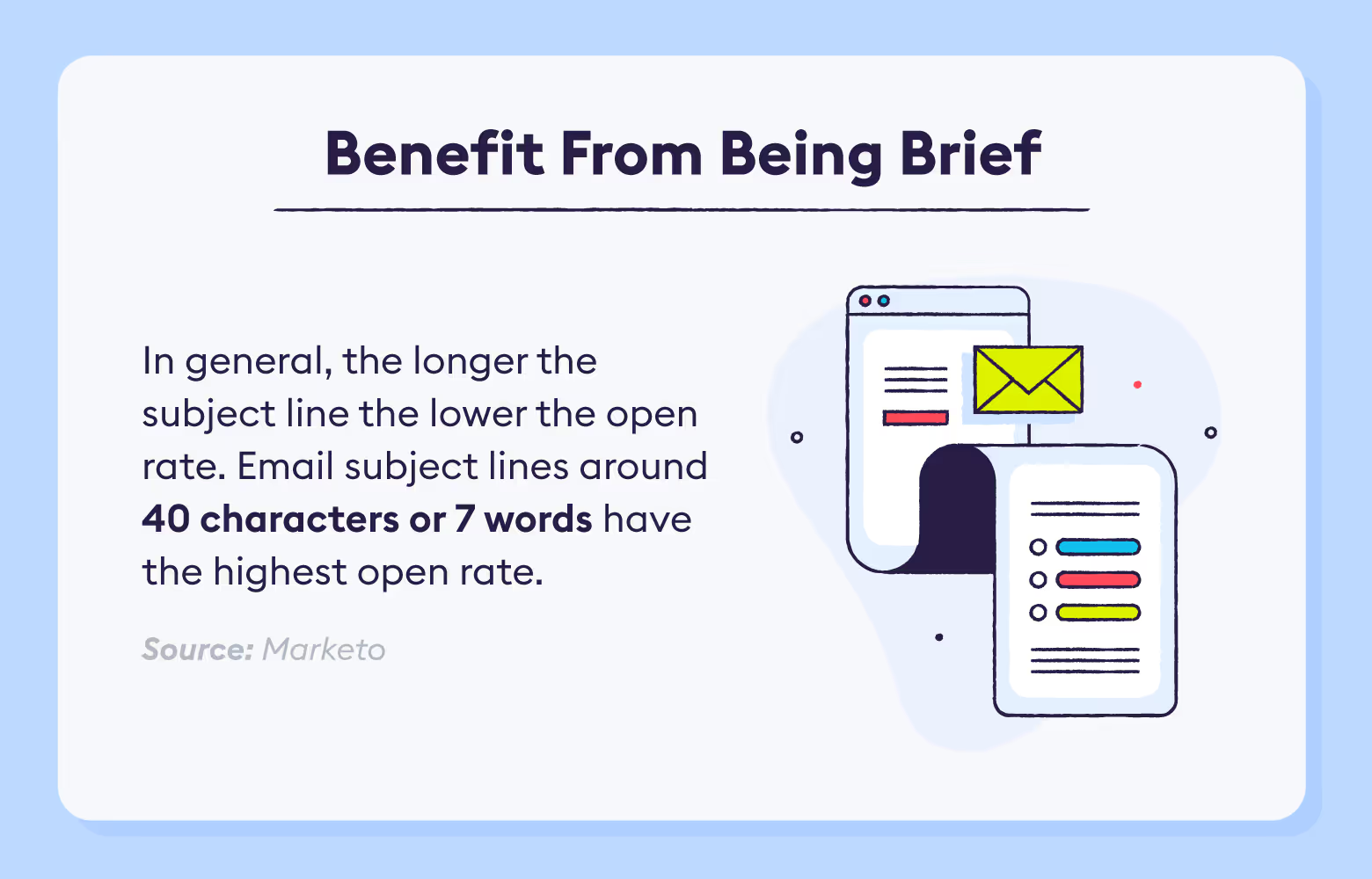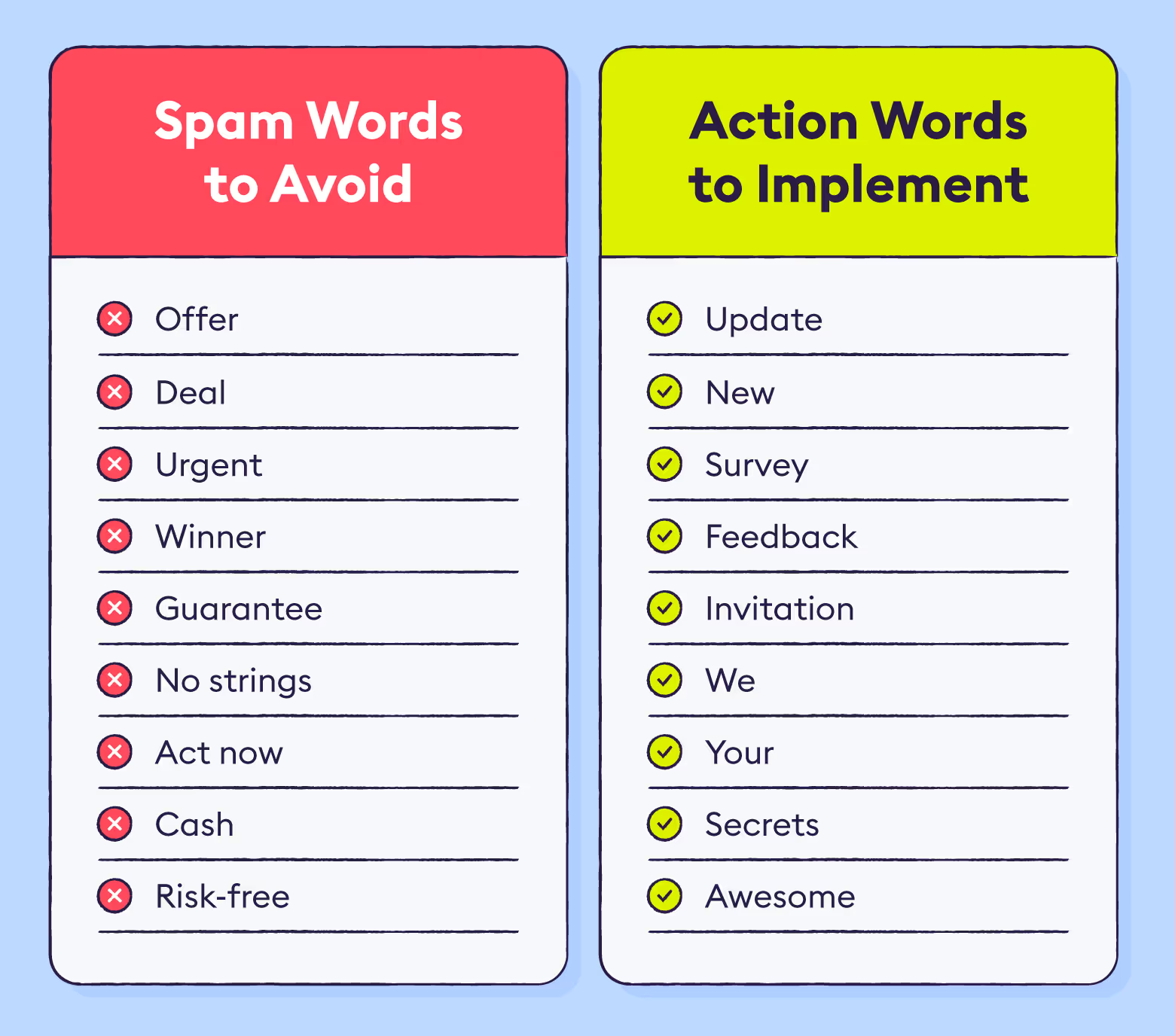
To create the best customer experience (CX) possible, businesses need to collect and analyze feedback from their clientele whenever possible. Sending surveys via email is a popular and straightforward way for businesses to collect customer feedback.
When sending surveys by email, one of the most important aspects is the subject line. According to Convince and Convert, 35% of recipients will open an email solely based on the subject line. The survey email subject line directly affects the survey response rate and the amount of valuable feedback a company receives.
The article below will give 10 strategic tips for crafting captivating email survey subject lines to boost your customer response rate and gain valuable insights to improve your business. For quick tips, you can also skip to our infograhic below.
1. Personalize The Subject Line
Paying for a service when the business treats you like a ticket isn’t enjoyable. We know that personalization is a crucial part of the CX. Personalization helps clients feel valued and cared for, which increases retention rates throughout different stages of the customer journey.
When it comes to emails, personalized emails have a 29% higher open rate and 41% higher click rate than non-personalized emails.
An easy way to personalize emails is to use the recipient's first name. The exception for this is for companies in the financial world or when one’s customers are elderly. Those in finance and elderly clients are often used to being referred to by their title and last name; so, companies should oblige them. Here’s an example: “Hi (Mr/Mrs. Last Name), how are you liking (Company name)?
Another way to personalize is to use geodata, which can be used to draft a location-based subject line. For example, “Hi (First Name), what did you think of our store experience in London?”
2. Aim For Brevity

According to Radicati, on average, people receive and send 122 business emails each day. That’s a lot of emails. Any irrelevant emails or those non-beneficial to the reader will likely get ignored.
If a company’s survey request wants to stick out amongst the sea of emails in someone’s inbox, the subject line needs to be clear and concise.
In general, the longer the subject line, the lower the open rate. An email’s subject line ought to be under 60 characters and 6–10 words in length. According to a study from Marketo, subject lines with a character count of 41 and a word count of 7 receive the highest open rates.
3. Get Emotional
Should companies be worried about getting too emotional in their subject lines? The simple answer is no. Survey email subject line should be in a consistent voice and tone with a business’ other customer experience and marketing communications. However, they can be more emotionally driven.
Even if a brand takes on a formal tone, they can still trigger emotions by humanizing the survey subject lines. Businesses can write genuine subject lines in the following ways:
- Use the first person “we” or “us” when referring to a business. Example: “We want to improve, can you help us?”
- State that email is coming from an executive instead of a business. Example: “This is (first name), CEO of (company name). How can we improve our offerings?”
- Create a sense of communing and belonging. Example: “Welcome to the (company name] family, (first name)! How can your new siblings improve?”
Personalizing the subject line in any of these ways will give the impression that the individual’s response makes a difference to the company.
4. Ask A Question
Part of a survey’s intent is to have a dialogue with a customer so that the company can receive feedback. By asking a question in the subject line, a business is creating an immediate conversation with its clients.
Simply requesting, “please take our customer satisfaction survey” or “please rate our product” isn’t likely to elicit a response. Instead, ask an open-ended question to gather qualitative data. Or, ask a question that requires surveyees to give a ranking for quantitative data.
For instance, a business can gather data to measure their Net Promoter Score (NPS) by putting the question in the subject line: “How likely are you to recommend (company name) to your friends and colleagues?” Open-ended questions in the subject line can also be simple and friendly, “Hi (first name), do you have feedback for our customer care representative, (first name)?”
5. Avoid Spam Words And Terms
Certain words in subject lines can trigger spam notifications from email servers sending them immediately to spam or trash folders. Additionally, some respondents might see these spam words and will immediately ignore or delete the email.
Businesses want to carefully avoid spam words whenever they send emails, but especially when sending surveys. Below is a list of spam trigger words to avoid in survey subject lines along with a few terms that evoke action and aren’t spammy.

6. Incentivize When Possible
If a business needs immediate feedback or requires several data points, then they should consider offering an incentive in their survey subject line. By creating a quid pro quo scenario, the respondents know exactly what they’re getting in return after they respond to a survey.
Incentive example subject lines:
- “(First name), please give us your feedback for a $25 discount code”
- “Share your thoughts on our demo to receive 10% off on your next purchase”
When offering incentives, consider these tips and strategies:
- Make sure respondents receive the promo or discount code immediately after the survey is completed
- Offer incentives sparingly so customers aren’t expecting a reward for each survey that’s sent out.
- Since a reward awaits respondents at the end of the survey, companies can take this opportunity to ask more questions than they normally would. Or they can implement 2–3 open-ended questions.
7. Create A Sense Of Urgency
Have you ever put off a project or procrastinated on a task because it didn’t have a deadline? We’ve all been there and we all know that the vast majority of working professionals value their time and prioritize tasks based on deadlines.
Filling out a survey from a business is usually not at the top of people’s to-do list. An easy way to get more feedback is to create a sense of urgency by giving a deadline.
Survey deadlines typically work best if they’re paired with an incentive. Here’s a catchy subject line: “24 hours left to take our survey and receive a $10 promo code.”
Please note that urgency in subject lines should be used sparingly. If they’re used too often then the sense of urgency becomes inconsequential.
8. Be Clear With Request
Businesses should consider the subject line for a survey as a call to action because it is one.
The listed tactics such as posing a question, adding an incentive, or creating urgency with a deadline are somewhat moot if the subject line itself isn’t clear.
The respondent should be able to immediately identify what is being requested of them. Don’t let cleverness create vagueness. Clear email subject lines and headers result in 541% more clicks than cutesy creative ones. At a base level, respondents should know these two things after reading a subject line in their inbox:
- That they’re being requested to take a survey
- Why they should take part in the survey
9. Optimize For Mobile

Today, 60% of people open emails on their mobile phones.
It’s therefore imperative that subject lines are optimized to fit on mobile screens. Again, for the best open rates, subject lines should max out at 60 characters and should stay under 10 words. The easier it is for a person to glance at their phone and understand the email’s request, the more likely they are to respond.
Companies will also want to optimize any of the email’s images or text to correctly fit on a mobile device. If the survey is within the body of the email, make sure all survey questions and answer choices are easy to see and can be quickly answered.
User experience issues will not only result in lower participation, but it will likely skew the results due to irritated respondents.
10. Test Subject Lines
With so many subject line options, it can be difficult to tell which ones work best. There are a couple of ways businesses can test subject lines. The easiest and most common is to do A/B testing.
To A/B test subject lines in emails, create two different subject lines. Subject line option A should be sent to one test group, and option B to the other test group.
Other factors must be taken into account and minimized. For instance, the test groups should be the same size, the body of the emails and the surveys themselves the same, and both emails should be sent out at the same time.
Once sent, companies should monitor the open and click rates for each option. In the end, response rates matter most. So, a business should go with the best-performing subject line based on how many customers clicked and responded to the survey.
Once a subject line is chosen, businesses can also A/B test other factors such as which day of the week and time of day is best to send emails. They can also test survey length and make changes to the body. These test results should be discussed in the survey results report.
Catchy Survey Subject Line Examples
Below are a few examples of catchy survey subject lines businesses can begin to A/B test with. Remember, clarity still reigns supreme — customers should quickly understand that a business is requesting feedback from them.
- We want your feedback (+ to give you 25% off)
- Hi (recipient name), do you have a minute to review your new (product)?
- We’re working to be better, completing this survey will help tremendously
- (First name), take our survey and receive a $30.00 promo code
- Was the (product) everything you hoped for?
- We rely on your insight, got two minutes?
- How’d you like the demo, (first name)?
- Last day to give feedback for a free month’s subscription
- (First name), do you mind describing your experience with (employee’s name)?
- How was your recent experience with (brand)?
Survey email subject lines matter. While email surveys aren’t the most interesting pieces of content to read through for consumers or subscribers, they’re vital for a company to address customer pain points. If the subject line isn’t engaging enough, people will likely ignore or delete the email. Therefore, companies will waste money on sending surveys.
To make the most out of survey email subject lines remember to do the following:
- Personalize the subject line by referring to customers by their first or last name.
- Keep subject lines under 60 characters and under 10 words, which also optimizes for mobile devices.
- Pose a question to start a dialogue with the customer.
- Offer incentives with deadlines, but be careful of using spam words.
For more quick tips on how to write engaging survey email subject lines see our infographic below and read our article on how to avoid writing bad survey questions.

Survey Email Subject Lines: FAQs
Why are survey email subject lines important?
The subject line is the first thing a recipient sees, and it determines whether they open the email. A compelling subject line increases open rates, leading to more responses and better survey data.
What makes a good survey subject line?
A strong subject line is clear, concise, and engaging. It should spark curiosity, convey the benefit of participating, or highlight the short time commitment required. Personalization, such as using the recipient’s name, can also boost open rates.
How long should a survey email subject line be?
The ideal length is between 6–10 words or under 50 characters. Short subject lines are easier to read on mobile devices and help ensure the key message isn’t cut off.
Should I use incentives in subject lines?
Yes, mentioning an incentive like a discount, gift card, or entry into a prize draw can increase engagement. However, it should be framed in a way that feels genuine and not overly promotional.
Is it effective to include urgency in survey subject lines?
Adding urgency, such as “Last chance to share your feedback,” can drive action by encouraging recipients to respond quickly. However, it should be used sparingly to avoid sounding pushy.
What are examples of effective survey subject line styles?
- Direct: “We’d love your feedback on your recent purchase”
- Curiosity-driven: “Can we ask you one quick question?”
- Incentive-based: “Share your thoughts for a chance to win”
- Urgency-focused: “Your feedback matters—survey closes today”
How can I test which subject line works best?
A/B testing is the most effective way to measure performance. Send different subject line variations to smaller segments of your audience, then roll out the best-performing version to the rest of your list.















